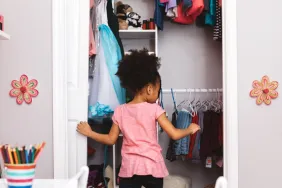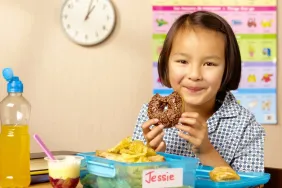Tattling is common among young children. They tattle on one another for a number of reasons as they learn and grow. While some tattle more than others, tattling is a perfectly normal part of child development. From home to school to daycare to other activities, young children are generally expected to understand and follow specific rules. They consistently get the message that rules are important. It makes perfect sense that they watch other kids carefully to make sure that rules are being followed and file reports when rules are broken. In doing this, kids attempt to understand boundaries and limits.
While tattling is often perceived as annoying by adults, many children tattle because they don’t understand the difference between telling because they need help and tattling every time another child veers off course. Keep reading to learn how kids tattle and what you can do to curb tattletale behavior.
Why do kids tattle?
The first step toward curbing tattletale behavior is uncovering the motivation. All behavior is a form of communication, even tattling. With that in mind, it’s important to remain calm and avoid overreacting to tattling. Some reasons kids tattle include the following:
1. Justice
Young children tend to be very literal thinkers. They generally figure out how to follow rules by around age 7, and they take rule following very seriously. They expect rules to be very literal and they can take it personally when other kids don’t follow the rules.
2. Attention
Some kids tattle because they want to be noticed or they feel left out. By tattling, they engage the adult in the room and meet their need for attention.
3. Frustration
Young children can be blamers. Sometimes they tattle on siblings or peers because they blame them for their frustration.
4. Revenge
Most tattling is harmless and not intended to hurt another child, but some kids do tattle to get back on another kid. By tattling, they can get the other child in trouble.
5. Poor problem-solving skills
Young children are often expected to work well together in groups, but that can be very difficult. Some kids tattle to get adult help when things aren’t going well.
How to curb tattletale behavior:
Like many other childhood behaviors, tattling can become a hard habit to break. It takes time and patience. If your child is in the habit of running to you every time the chips are down, it will take more than a quick fix to change this behavior. Try these strategies to help your child learn to stop tattling:
1. Explain the difference between tattling and telling. Many young children don’t understand that tattling is running to the nearest adult with every tiny transgression, whereas telling is getting help because something is dangerous, scary, or unkind. Give your kids concrete examples. “If someone touches you when you say no, you tell an adult. If someone breaks a rule in a game, you can speak up to the other kid but you don’t need an adult.” The more specific examples you provide, the more your child understands when he needs help and when he needs to problem-solve.
2. Teach problem-solving skills. Kids don’t enter this world equipped to cope with and work through complicated or frustrating peer situations. Oftentimes they tattle because they want help. Guide your child through the problem-solving process: Name the problem, verbalize feelings about the problem, brainstorm three possible solutions, discuss the solutions with the other kids, and choose one.
3. Help your child be more assertive. Kids get so caught up in justice and fairness that they forget to speak up and run straight to the nearest adult, instead. Practice making assertive statements to work through peer conflict. “The rule of the game is that you can only roll once. That makes it fair for everyone,” communicates that another child broke a rule without running for help right away. Kids do need to learn how to work through conflict independently. This is good practice.
4. Don’t overreact when your kid tattles. The goal is to help kids understand when they should tell an adult about something dangerous, scary, or uncomfortable versus when they can walk away from something that’s just annoying. If parents overreact when kids tattle, kids learn to internalize their feelings and avoid seeking help when they might need it. Point out instances of tattling in a gentle way to help your child understand it and work on solutions together.
The good news is that most kids outgrow tattletale behavior as they learn to work through conflict and cope with frustration. In the meantime, empathize with your child and work on building problem-solving skills and assertiveness to decrease the need for constant adult intervention and validation.
Photo: Getty








